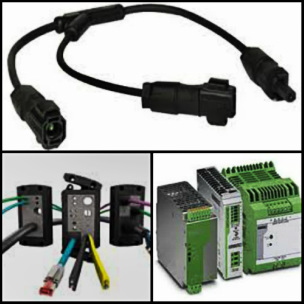
The United States of America is currently the biggest market when it comes to medical devices. Outside the country, many medical companies strive to earn similar rankings. The US and European markets are by far the biggest players, but the Asian market is also slowly gaining a hold on clients. This is a good thing, since Phoenix connector distributors are necessary in the medical field.
Making Medical Devices Consumer-Friendly
Medicine, its components, and its practices continue to transform as time goes on. This is a good thing, because it gives clients the benefit of convenience and speed. This revolutionized practice has reduced the distance between caregivers and patients, made important patient information accessible to many health care centers at once, and changed the patient-physician dynamic for the better.
This revolution has empowered most patients and encouraged them to take control of their health. It benefits physicians by making information readily available. It helps both parties by making communication faster and more mobile than ever. An easier way of communication has begun to take place thanks to connector suppliers and other medical distributors.
The Three Main Divisions of the Medical Electronics Market
There are three main fields in the medical electronics market. These include therapeutic equipment, diagnostic and imaging equipment, and others. The therapeutic division involves the equipment used to treat a variety of medical disorders. Diagnostics and imaging include the equipment used in hospitals, clinics, and homes, including medical connectors. The rest consist of equipment that analyzes enzymes, tissues, body fluids and gases.
Why is the Medical Electronics Field a Lucrative One?
The medical electronics market is a continuously growing market of opportunity. The factors that influencing this market’s growth include an aging population, the inflation of health care costs, the shortage of healthcare professionals, and combining IT services with medical devices and technology.
As with nearly all industries, the medical field has adopted this technology trend to create smaller, faster, and higher quality products. There is also a need for equipment with sharper resolution, data security, and reduced number of connectors in the medical market.
The largest number of products and equipment in the healthcare industry belong to medical imaging and diagnostics. The equipment belonging to these categories are complex, but the new products these days are markedly lighter, more flexible.They also focus on the patient’s comfort. Medical manufacturing companies do this by combining biology and electronics to highly connectible devices.
Why Should Medical Connectors Undergo a Revamp?
According to Bernstein distributors, there are different types of medical connectors, ranging from sub miniature high-performance interfaces to disposable single-use applications. They are used on equipment for monitoring pulse rates, blood pressure and sleep patterns. The data can upload and update right away through the Internet thanks to connectors.
Medical connectors should meet a number of national or regional specifications and approvals. They have to be consumer friendly, and allow the users to utilize them repeatedly, and withstand sterilization. More importantly, connectors have to be small, reliable, and strong enough for application. Medical companies are constantly striving to create smaller, more versatile versions to make customers more comfortable.
Technology is present in every aspect of health care. The use of innovation and accessibility of advanced technology can help improve the patients’ longevity and quality of life. The demand for life-extending and quality-increasing care will soon lead to the evolution of electronic technology within the medical field.
Making Medical Devices Consumer-Friendly
Medicine, its components, and its practices continue to transform as time goes on. This is a good thing, because it gives clients the benefit of convenience and speed. This revolutionized practice has reduced the distance between caregivers and patients, made important patient information accessible to many health care centers at once, and changed the patient-physician dynamic for the better.
This revolution has empowered most patients and encouraged them to take control of their health. It benefits physicians by making information readily available. It helps both parties by making communication faster and more mobile than ever. An easier way of communication has begun to take place thanks to connector suppliers and other medical distributors.
The Three Main Divisions of the Medical Electronics Market
There are three main fields in the medical electronics market. These include therapeutic equipment, diagnostic and imaging equipment, and others. The therapeutic division involves the equipment used to treat a variety of medical disorders. Diagnostics and imaging include the equipment used in hospitals, clinics, and homes, including medical connectors. The rest consist of equipment that analyzes enzymes, tissues, body fluids and gases.
Why is the Medical Electronics Field a Lucrative One?
The medical electronics market is a continuously growing market of opportunity. The factors that influencing this market’s growth include an aging population, the inflation of health care costs, the shortage of healthcare professionals, and combining IT services with medical devices and technology.
As with nearly all industries, the medical field has adopted this technology trend to create smaller, faster, and higher quality products. There is also a need for equipment with sharper resolution, data security, and reduced number of connectors in the medical market.
The largest number of products and equipment in the healthcare industry belong to medical imaging and diagnostics. The equipment belonging to these categories are complex, but the new products these days are markedly lighter, more flexible.They also focus on the patient’s comfort. Medical manufacturing companies do this by combining biology and electronics to highly connectible devices.
Why Should Medical Connectors Undergo a Revamp?
According to Bernstein distributors, there are different types of medical connectors, ranging from sub miniature high-performance interfaces to disposable single-use applications. They are used on equipment for monitoring pulse rates, blood pressure and sleep patterns. The data can upload and update right away through the Internet thanks to connectors.
Medical connectors should meet a number of national or regional specifications and approvals. They have to be consumer friendly, and allow the users to utilize them repeatedly, and withstand sterilization. More importantly, connectors have to be small, reliable, and strong enough for application. Medical companies are constantly striving to create smaller, more versatile versions to make customers more comfortable.
Technology is present in every aspect of health care. The use of innovation and accessibility of advanced technology can help improve the patients’ longevity and quality of life. The demand for life-extending and quality-increasing care will soon lead to the evolution of electronic technology within the medical field.

 RSS Feed
RSS Feed